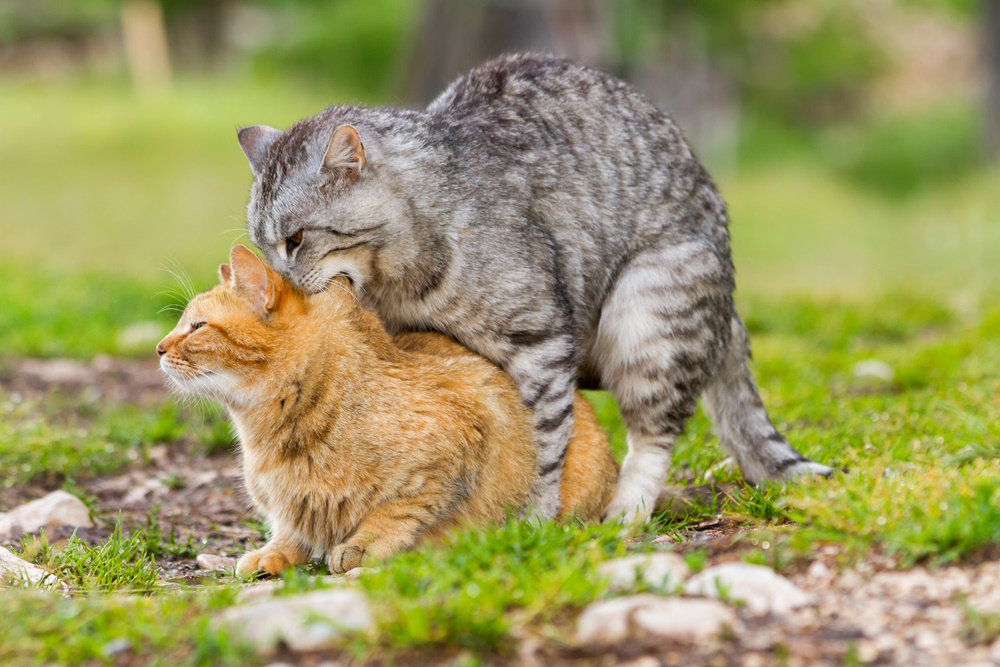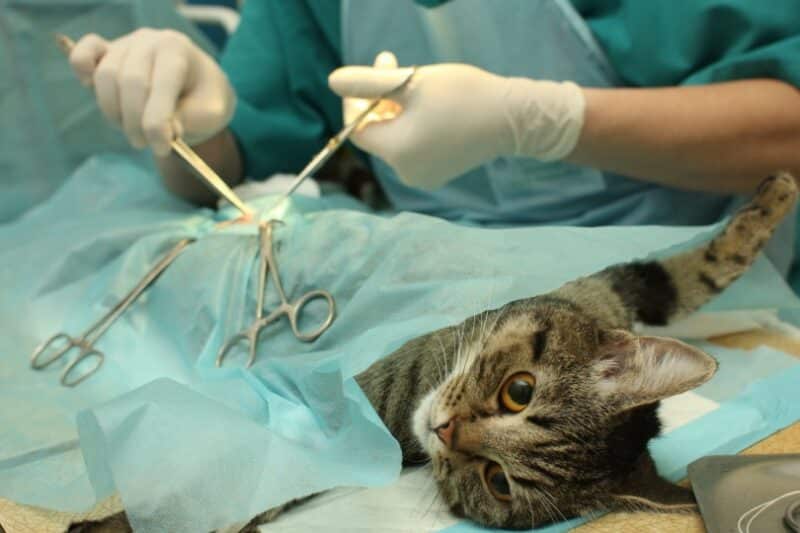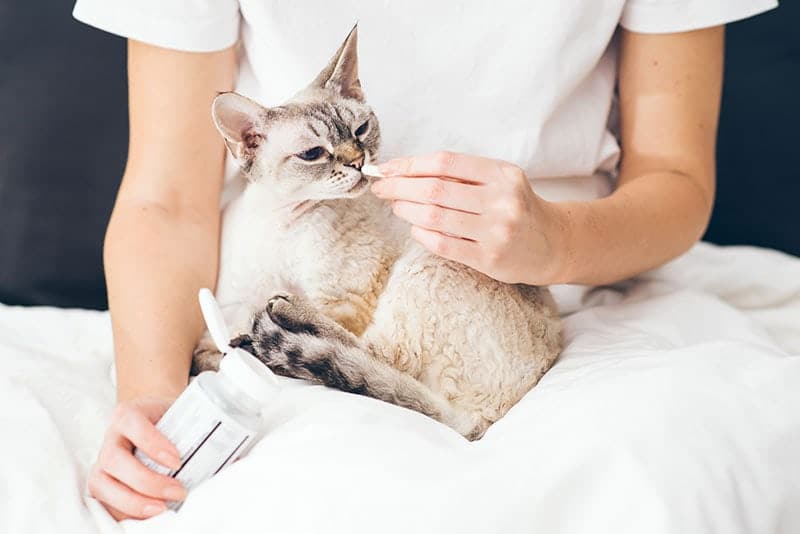Click to Skip Ahead
Most pet parents of female cats, unless they are intending to breed them, are keen to prevent their cats from having kittens and unwanted pregnancies. While women have several different contraceptive options available to them, felines have very little. This is further problematic because a cat’s heat cycle is somewhat complicated.
Depending on which country you reside in, birth control tablets for cats are available to prevent your cat from coming into season (also known as being on heat or their estrous cycle). If your cat is prevented from coming into season, then she will be unable to fall pregnant, even if she is mated by an intact male. However, although this may sound like a good option, and for some owners it may be the only option, there are numerous problems associated with this method of birth control.
The Cycle of the Queen
Female cats reach puberty approximately between the ages of 5–12 months old. Cats are seasonally polyoestrous, which means they have a number of cycles (every 2–3 weeks) during the breeding season (spring through fall). Some cats are non-seasonal and have cycles during the wintertime as well, particularly indoor cats with exposure to constant artificial light. The last cycle of the breeding season is followed by a longer period of inactivity of around 3–4 months.
When the queen (an unneutered female cat) is in season, she is receptive to male cats. The main signs she will show are behavioral ones. Female cats are vocal at this time, roll and rub on objects and will elevate their hind quarters.
The Mating Process
When the queen will allow mating and is ready, she often crouches down with her tail to one side to encourage this. The tom cat will then bite the back of the queen’s neck and mount her, holding onto her chest with his front legs. The act of intermission is brief and often causes the queen to vocalize loudly as the male withdraws due to barbs found on the end of the male’s penis. The whole mating process usually takes less than 5 minutes and is often repeated a few times, particularly if it is assisted or organized mating.

Is There a Birth Control Pill for My Cat?
Interestingly, there is a birth control pill or tablet for female felines, alongside other types of hormone injections to stop cats from coming into heat. These contain synthetic hormones. In the USA, a medication known as megestrol acetate is most used to do this, although it must be mentioned that this method of birth control is not something commonly practiced currently in the USA or UK. Other countries may vary.
Megestrol acetate is a tablet, available only on prescription from your veterinarian. It is administered orally to control the estrous cycle of queens, and it prevents them from coming into season. This technique is how all the different types of hormonal injections and tablets used for the purpose of contraception in cats operate, and they also allow queens to return to their normal cyclic activity on withdrawal from the hormone treatment.
This type of birth control and solution on the surface may seem a safer and cheaper option than surgery to fix your cat, yet it comes with various risks and side effects, nor has the Food and Drug Administration (FDA) licensed megestrol acetate for birth control usage in cats. Therefore, it has to be used “off-label” by veterinarians.
Side Effects of Cat Birth Control
As with most drugs, there are side effects. Hormonal injections and tablets are not exempt. In fact, their side effects are plentiful.
- Weight gain
- Increased appetite
- Lethargy
- Discomfort or pain at the injection site or difficulty administering the tablets
- Behavior changes
- Vomiting
- Diarrhea
- Seizures (fits)
- Increased drinking
- Increased urination
- Enlargement of the mammary (breast) tissue
- Mammary tumors/cancer
- Recurrence of any viral diseases
- If a cat is accidentally treated with these drugs when pregnant, the fetuses may be adversely affected
- Increased risk of pyometra ( a serious uterine infection)
In addition, it can pose risks to people, and pregnant women should either completely avoid handling this medication or must wear gloves if they need to administer it to their cat.
How Can I Stop My Cat From Getting Pregnant?

There are very few methods and solutions to prevent your cat from becoming pregnant, unfortunately. Contraception choices and therefore birth control options are rather limited compared to those of humans.
- Keeping your female cat away from unneutered male cats. But this is often impractical on a day-to-day basis and highly risky.
- Hormone control. Hormone injections or tablets could be used to control the estrous cycle of your female cat and prevent her coming into heat, but as discussed, these have significant side effects, and many of the drugs used are not approved for this use and purpose in countries like the USA.
- Spay your cat. The most logical, sensible, and best way to prevent unwanted kittens and pregnancies is to spay your female cat. This procedure is the same operation as an ovariohysterectomy in human women. Cats, quite different from humans, recover well and speedily from the surgery, usually within days, being back to normal within 10–14 days given there are no complications. The time to perform the procedure is short and routine. Spaying your cat also significantly reduces certain types of cancer.
Conclusion
Contraceptive tablets and other forms of contraception work well and are relatively easy for human women, but the same cannot be said for felines.
While veterinary medicine and breakthroughs are always evolving, currently, it is common practice and best thought to offer spaying as the solution to birth control for cats.
Featured Image Credit: Boy77, Shutterstock













